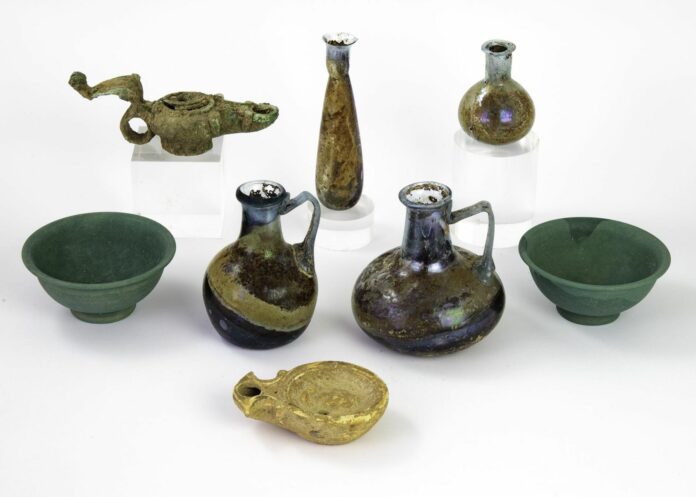Burials With Fine Glass Goods Along Roman Road Found in France

Archaeologists from the French National Institute for Preventive Archaeological Research (INRAP) recently dug up some of the ancient artifacts in Nîmes, France.
They found many old things buried underground on Rue de Beaucaire. These treasures date back to when the Romans were ruling, from about the 2nd century BC to the 2nd century AD.
Back in the day, Nîmes was called Nemausus and was prospering as a Roman colony around the 1st century BC.
Nîmes sits where the flat land of the Vistrenque River meets hills like Mont Duplan to the northeast, Montaury to the southwest, and Mt. Cavalier and Canteduc Knoll to the west.
In old writings, Nîmes is mentioned as dede matrebo Namausikabo, meaning “he has given to the mothers of Nîmes,” and “toutios Namausatis,” meaning “citizen of Nîmes.” Nemausus was the god worshipped by the local Volcae Arecomici tribe.
The city was well-planned, with streets running north-south and east-west, meeting at a central plaza called the forum.
One standout building from that time is the Maison Carrée, a fancy temple built in the late 1st century BC, according to Archaeology Mag.
Romans prohibited burials within city limits
The recent digs on Rue de Beaucaire found lots of burial spots, like places where people were cremated and then buried and also spots where people were buried again after cremation. These graves were in special areas, showing that Romans didn’t bury people inside the city.
Unearthing Roman Treasures: The Enchanting Glassware of Nîmes
In the heart of the ancient Roman city of Nîmes, a fascinating discovery has recently been made by INRAP archaeologists. A stunning collection of glassware dating back to the Roman period has been unearthed, offering… pic.twitter.com/i9dZoFn44f
— Orero Creations (@OreroCreations) April 12, 2024
There were about 15 graves found, mostly with burned remains, but some had bodies buried whole. One touching find was the burial of a small child with a clay jug and lamp, showing how the Romans honored their dead with special items, as reported by Archaeology Mag.
In antiquity, cremation was a common way to handle funerals. They would burn the bodies on pyres made from rocks or bricks or just in holes dug in the ground. After burning, they would gather the ashes and put them in graves near the pyre or in nearby spots. People often buried stuff like grooming tools, pots, ceramics, and lamps with the dead.
Well-preserved Roman artifacts including glass vases
The archaeologists found lots of burials well-preserved glass vases. Some were used in special feasts called the refrigerium, where people honored the dead. These feasts, led by female priests, usually involved drinking wine from these glass vases.
They also found a well, but it’s hidden under modern buildings. Even though it’s filled in now, there’s a chance for more discoveries if they dig deeper into it later on.
The excavation site opened up for everyone on Saturday, April 13th. Archaeologists will be there to guide tours, showing people the amazing discoveries found under the streets of Nîmes.
